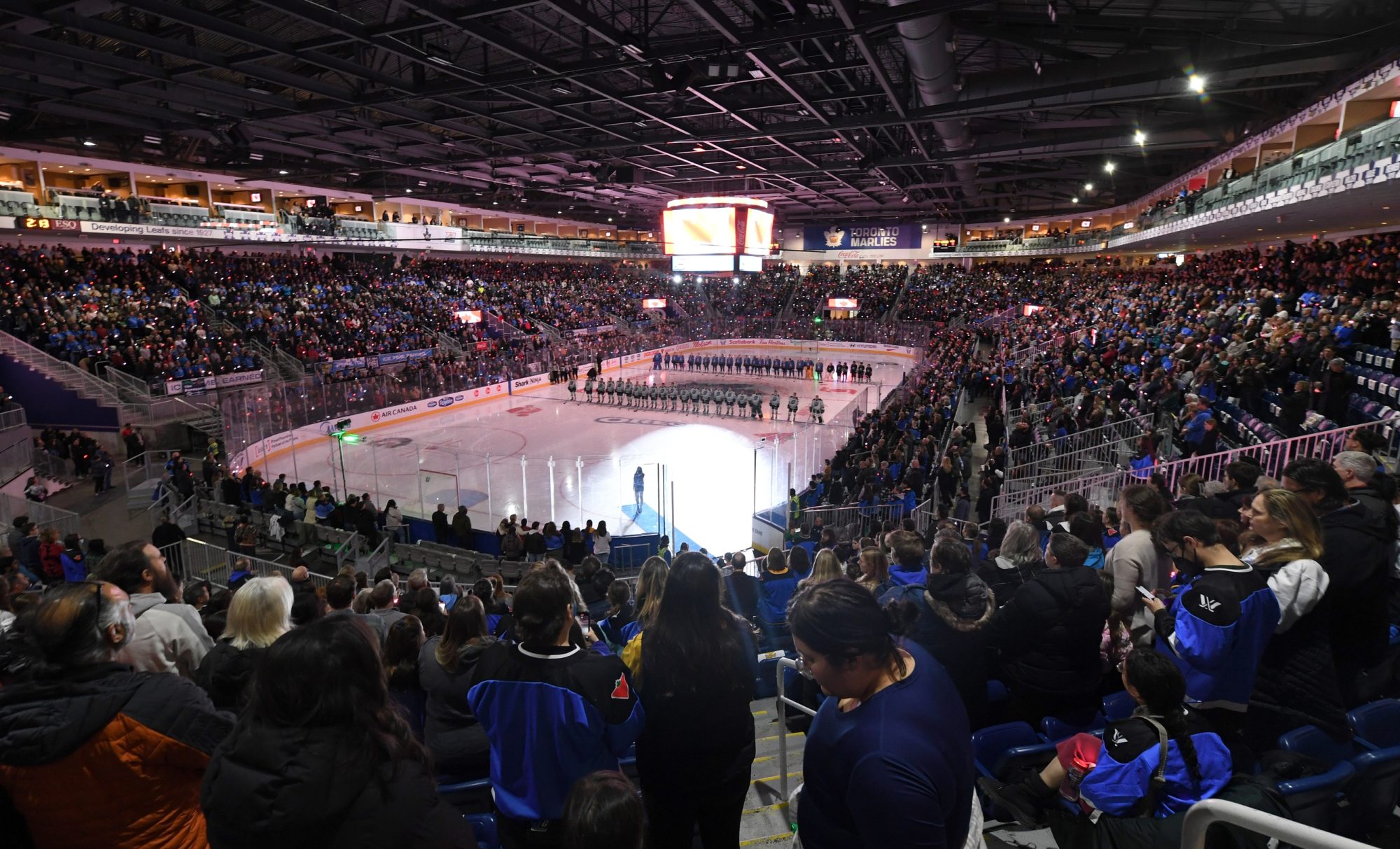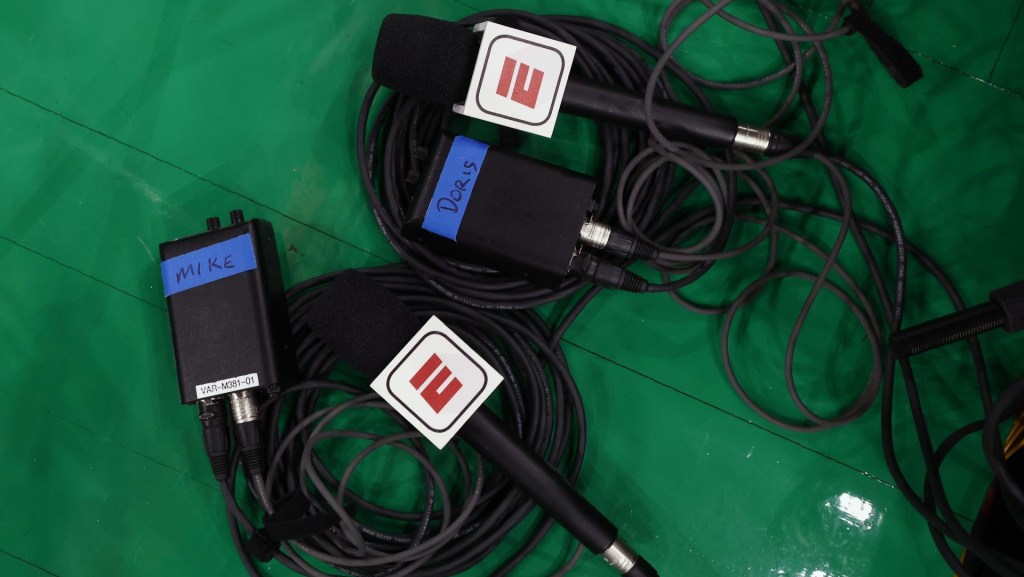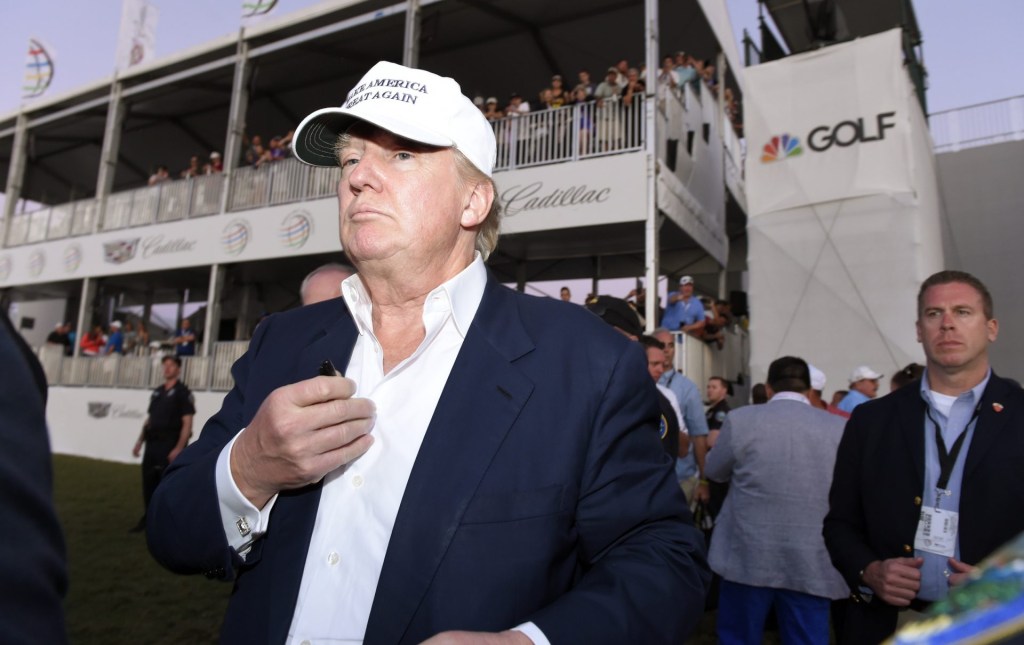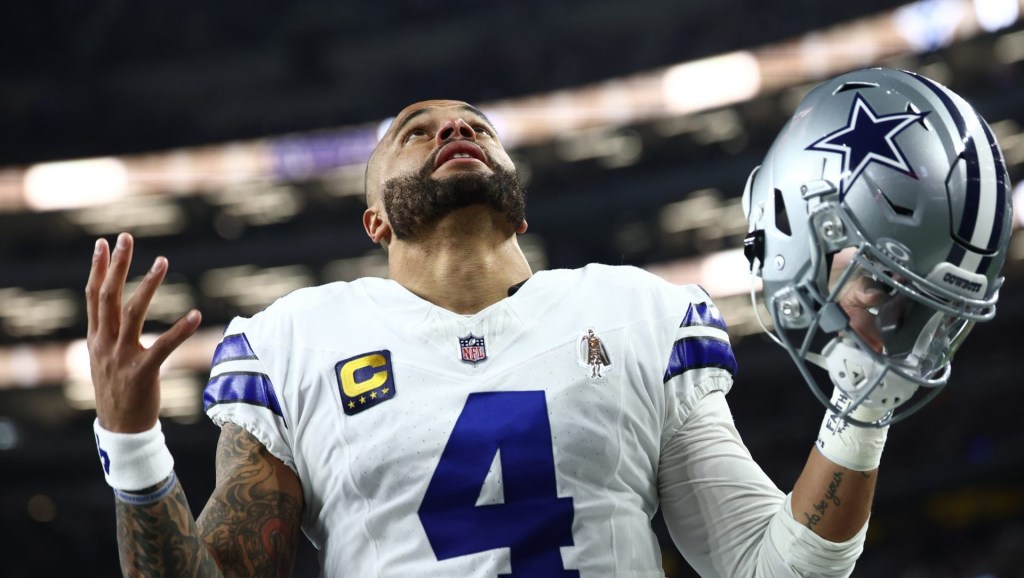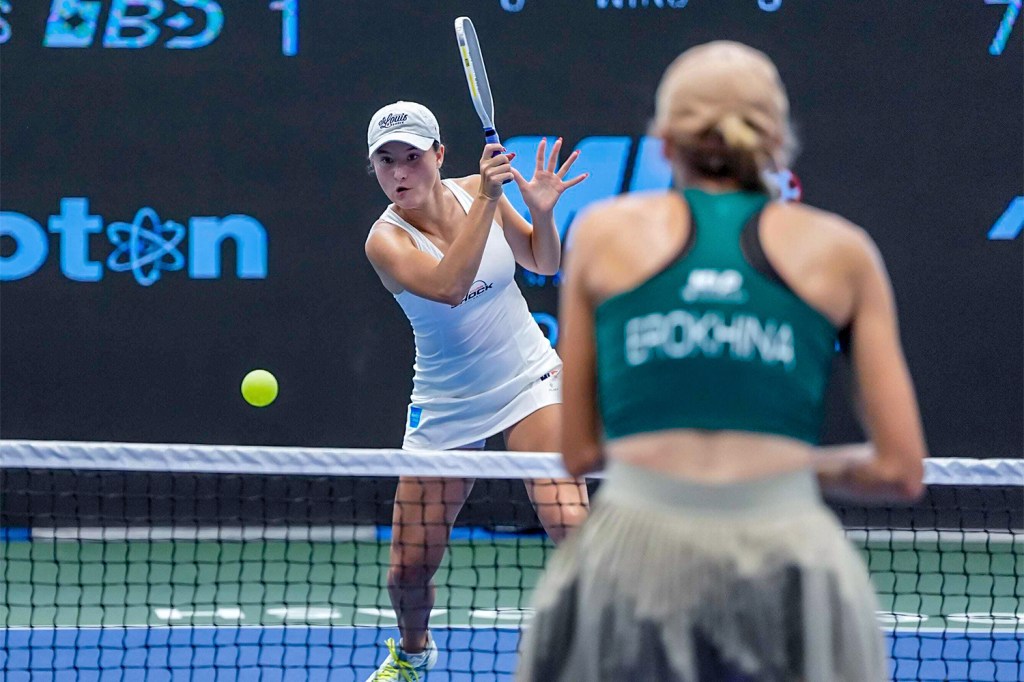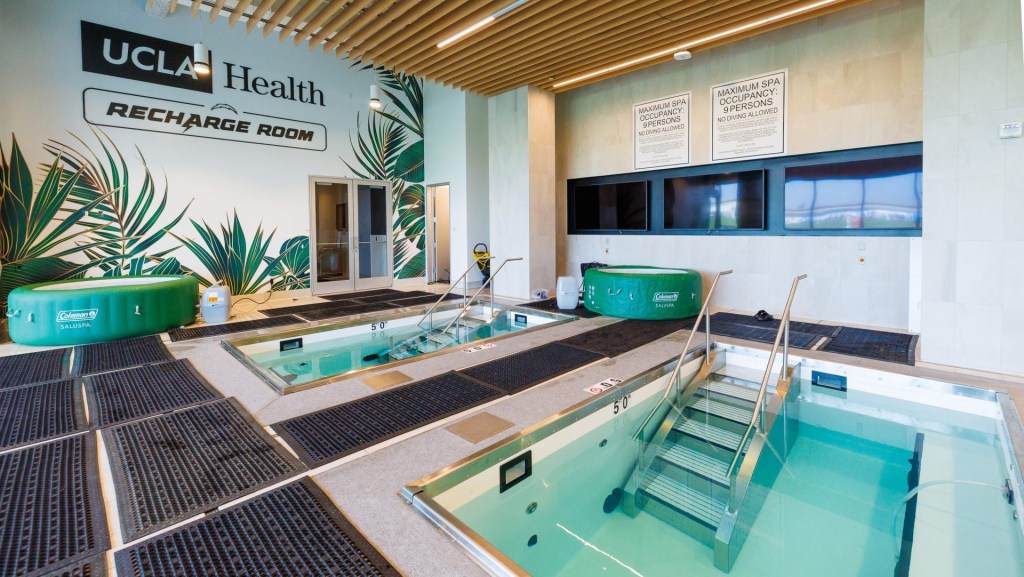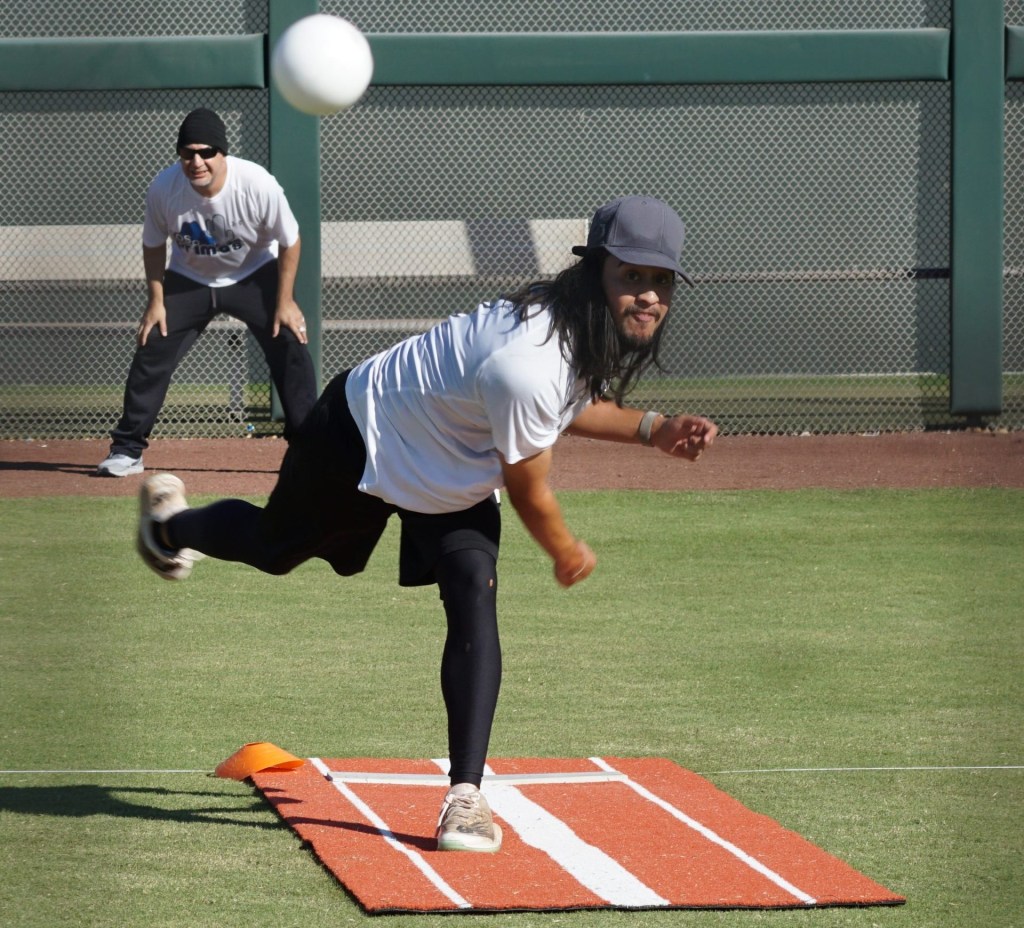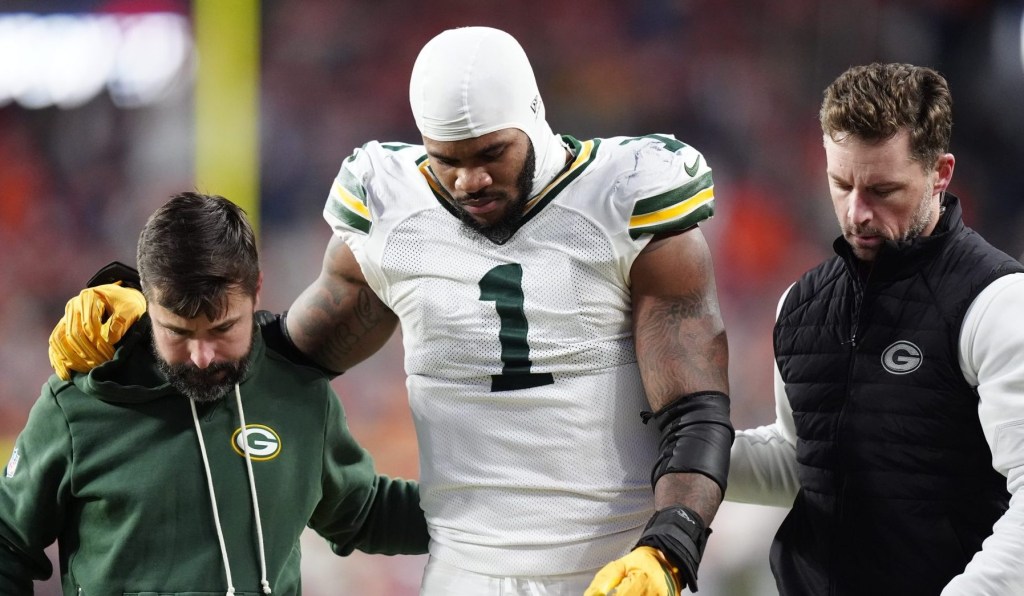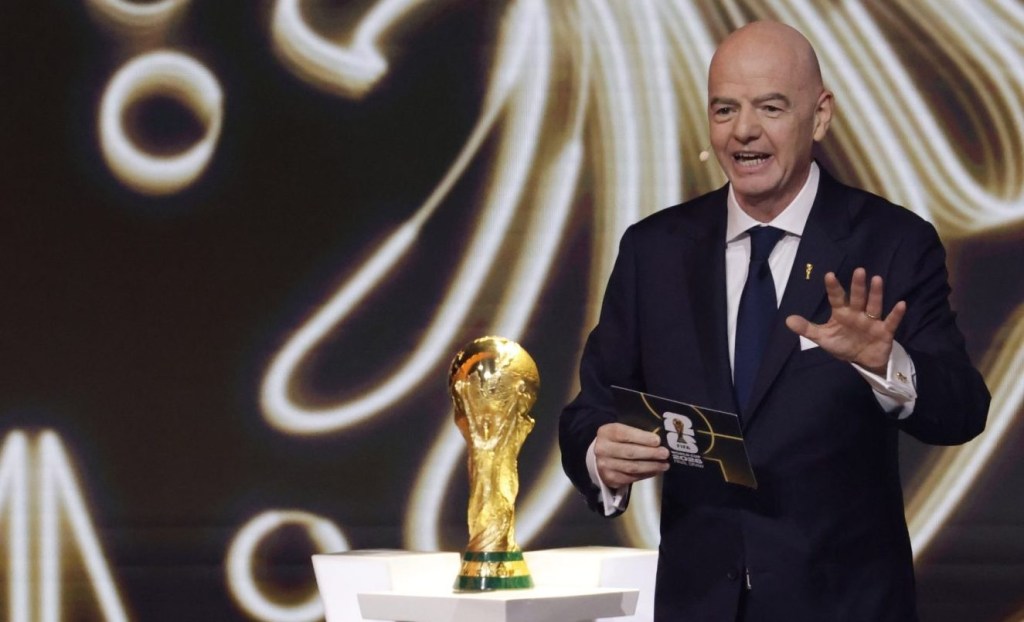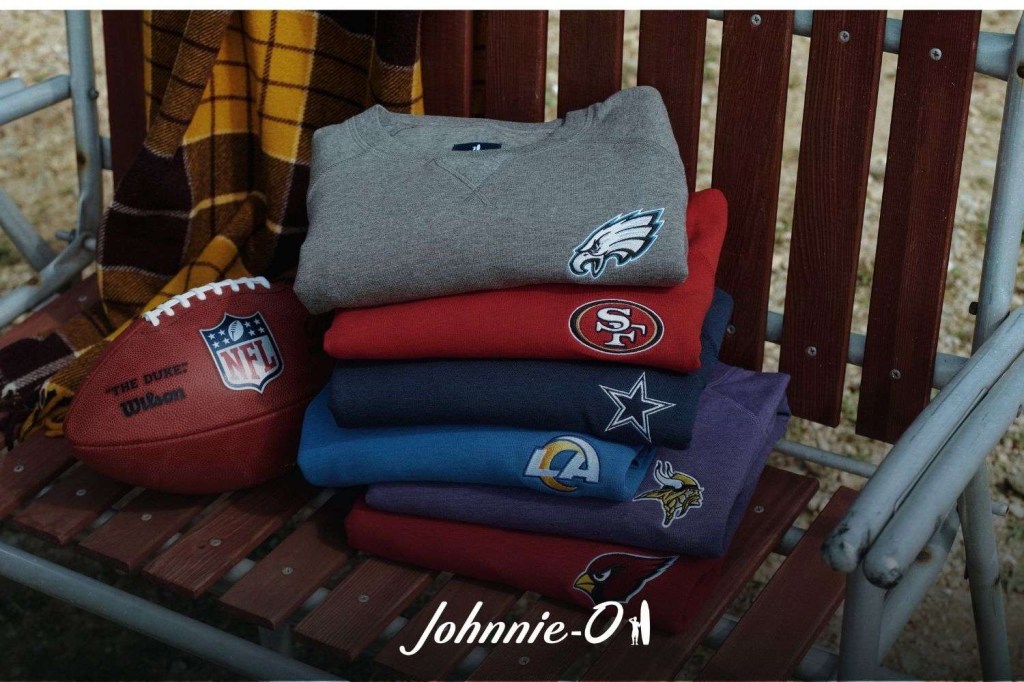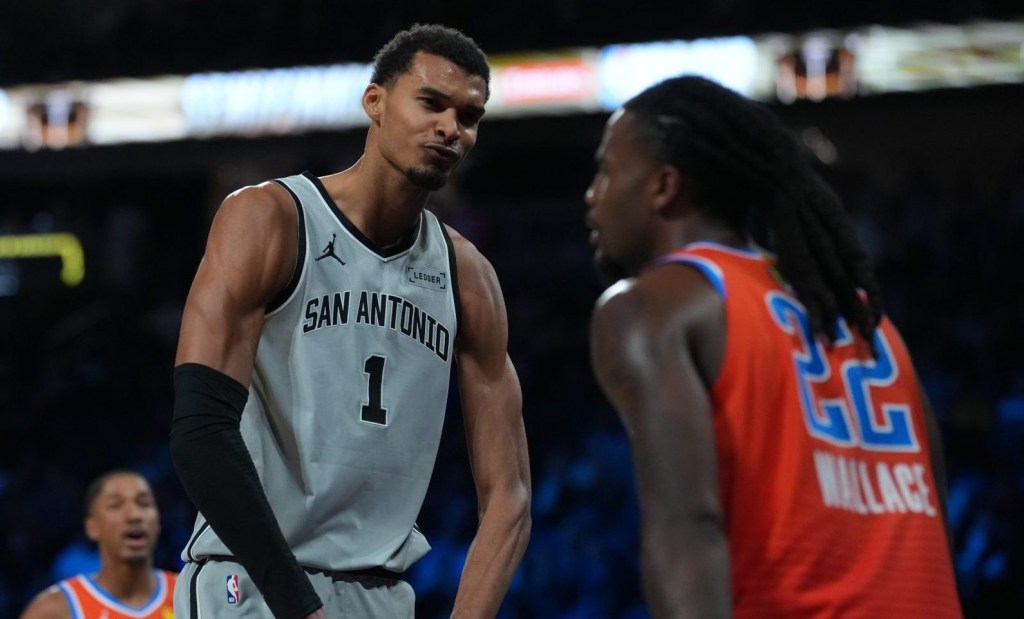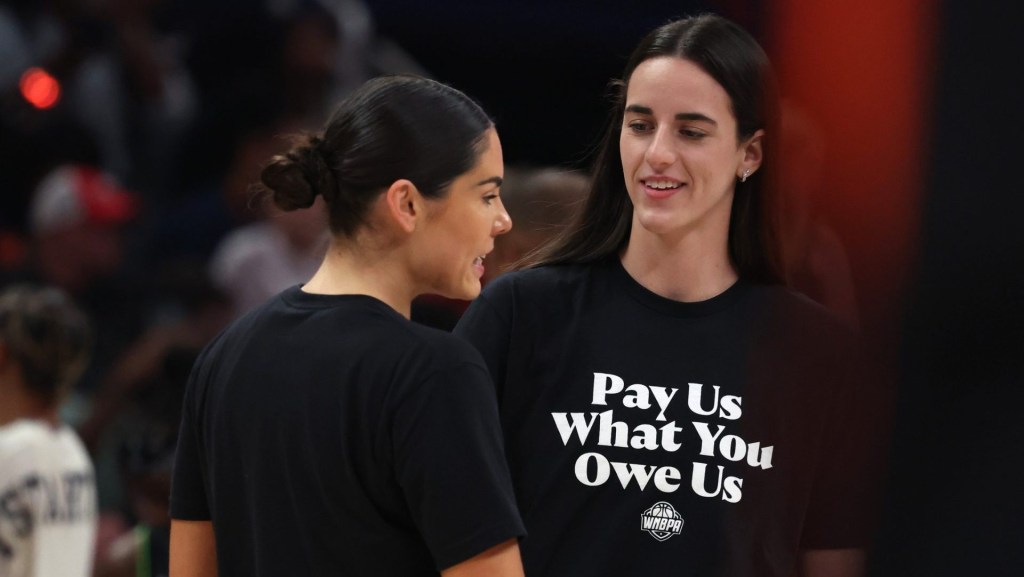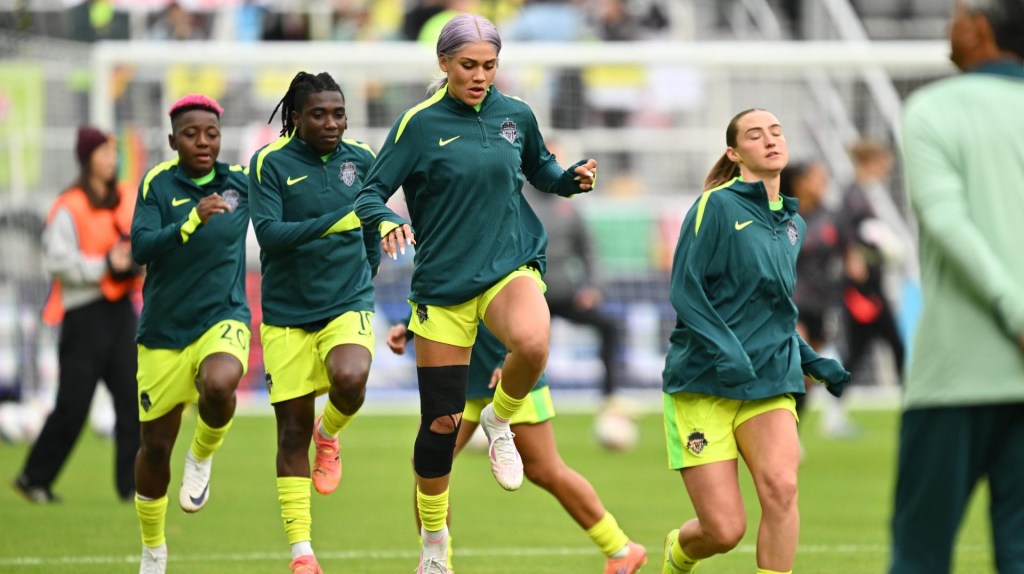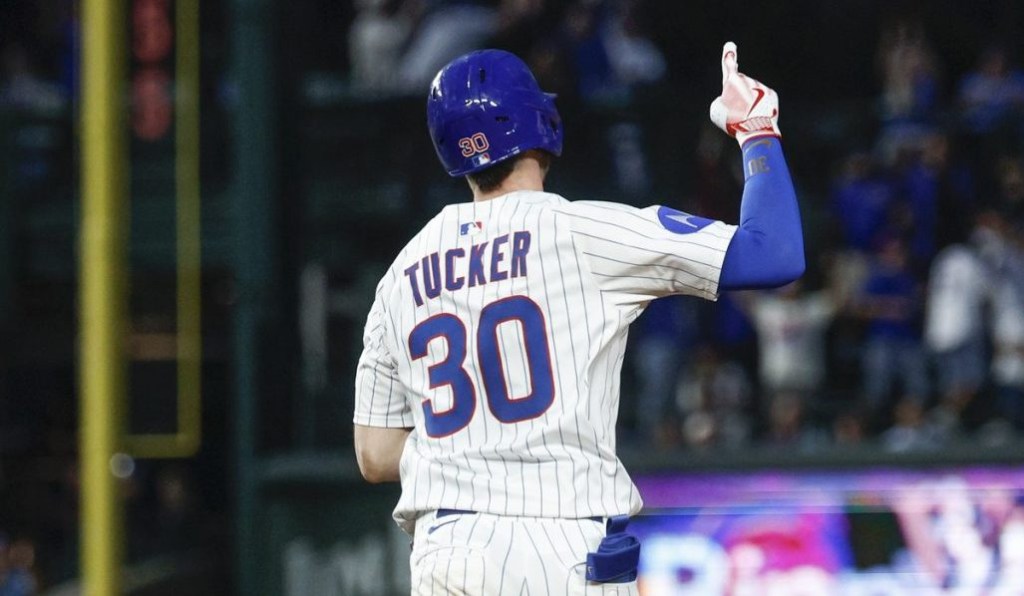Last winter, the PWHL charted a new course for women’s hockey. In just a few months, players forged a collective bargaining agreement, scattered to six markets, and celebrated the launch of a new league designed to meet the professional standards they’d long desired.
The season was in many ways a success, but it wasn’t without hurdles. This offseason, the league instituted each market’s team names and logos (including one that flirted with a Taylor Swift trademark issue) and announced it would add two expansion teams by the 2025–2026 season.
This season began at the end of November, about a month earlier than the year before, and the PWHL has played 34 games this season to date. As of Monday, attendance has risen about 30% compared to last year’s average, the league says.
“Season two has been off to much more of a smoother start than the start of season one, which was the start of a brand-new league,” Kendall Coyne Schofield, the captain of the champion Minnesota Frost, told Front Office Sports.
Canada Booming, but NYC ‘Needs More Butts in Seats’
Attendance figures compiled by FOS show the sophomore season has been a hit in Canada, but growth remains flat in the United States.
This season, the Canadian teams have drawn over 37,000 more total fans to home games than their U.S. counterparts, despite playing four fewer games.
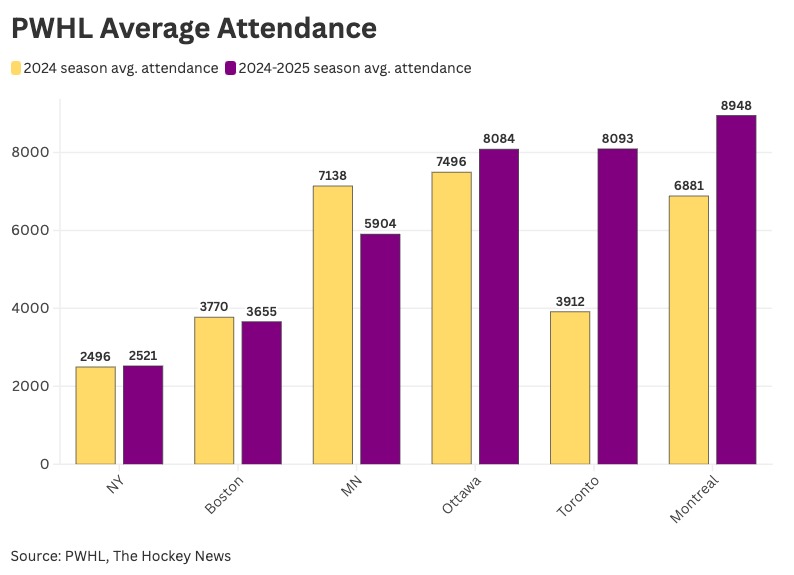
Montreal has welcomed more than 10,000 fans to three of its four home games. Toronto has made the biggest jump this season after moving to the 8,140-capacity Coca-Cola Coliseum, more than doubling its average attendance. Attendance in Ottawa has been modest, but one game in early December that moved to the Senators’ home ice brought in 11,065 fans—the highest-attended home game in Canada so far this season.
But the U.S. teams aren’t drawing similar crowds. The reigning champion Frost have seen attendance dip to an average of fewer than 6,000 fans, and Boston has only cracked the 4,000-fan threshold once. I was one of 1,569 people at the league’s lowest-attended game of the year in early January at the Prudential Center in New Jersey. Like Toronto, New York settled on a full-time arena in the offseason—a full-sized one, at that—but a similar attendance spike hasn’t followed.
“In terms of New York, we need more butts in the seats, so continuing to improve in that area is important,” Coyne Schofield says. “It’s a beautiful building though. We love playing there.”
One bright spot has been the Takeover Tour, a series of games testing out cities that don’t have teams yet. The Vancouver stop was this season’s highest-attended game with 19,038 fans, and the Denver game set a new attendance record for women’s hockey in the U.S with 14,018 fans. The four takeover stops are averaging close to 16,000 fans per game, compared to nearly 6,000 for all non-takeover games.
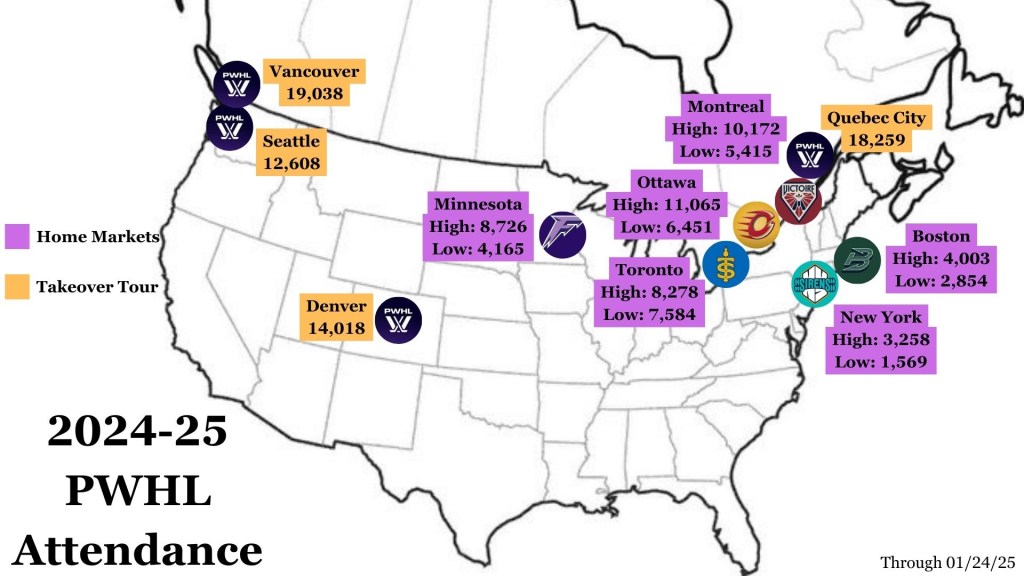
An ‘Outgrown’ Salary Model
Off the ice, players have seen a number of improvements from last season. Coyne Schofield, who is also president of the players’ association, says players told the league that food quality at hotels could be better, and the PWHL adjusted. She also says the league reached out to offer new benefits, including giving players rideshare vouchers leaving the airport, and covering a nanny’s flights, meals, and hotels for any players with children under the age of 1. Things like equipment, apparel, and parking passes were all in place ahead of time, which wasn’t the case last year, she says.
“To have a CBA prior to the league being played was historic, but now that players have lived experiences in the league, their wishlist of what they want, what they like, what they would like to change, is going to be different,” Coyne Schofield says. The CBA was ratified in 2023 and runs through July 2031.
Coyne Schofield’s wishlist includes raising the minimum salary ($36,050 this season) and adding more full-time roster spots instead of having reserve players (who get a $15,000 stipend), a model she thinks the league has “outgrown.”
“The reason that we built this league is so players don’t have to work two jobs, and right now those players are working two jobs,” she says. A mother herself, Coyne Schofield says she’s also gotten ideas about how to enhance the PWHL’s maternity policies from other leagues like Unrivaled, which offers nannies for its 3-on-3 basketball players with children.
‘The Gold Standard’
The PWHLPA announced Wednesday a new executive director in Malaika Underwood, the former interim CEO of OneTeam Partners and elite former women’s baseball player.
An item on Underwood’s wishlist is increasing TV access for viewers in the U.S. In Canada, games air on national partners including TSN and Amazon Prime Video. In the U.S., every game is streamed on YouTube, but the league otherwise has only local deals with FanDuel Sports Network North (Minneapolis/St. Paul), MSG Networks (New York), and NESN (Boston).
“I really want the PWHL and the PWHLPA to be the gold standard for women’s sports leagues,” Underwood says.
For all the success of the tour, it’s unclear whether the league still plans on adding two expansion teams by November. The PWHL hasn’t filed trademark applications for any new teams or markets, and Coyne Schofield says the league hasn’t had a conversation with the union about expansion. In other growing leagues, like the WNBA, MLS, and NWSL, recent expansion bids have been awarded one or two full seasons ahead of when the team would begin play.
“There has been significant interest in PWHL expansion, even before the league initiated a request for proposals,” a PWHL spokesperson tells FOS. “We are using several data points to evaluate proposals and if there are markets that meet all criteria and it makes smart business sense, then we’ll move forward with them for the 2025–26 season.”
